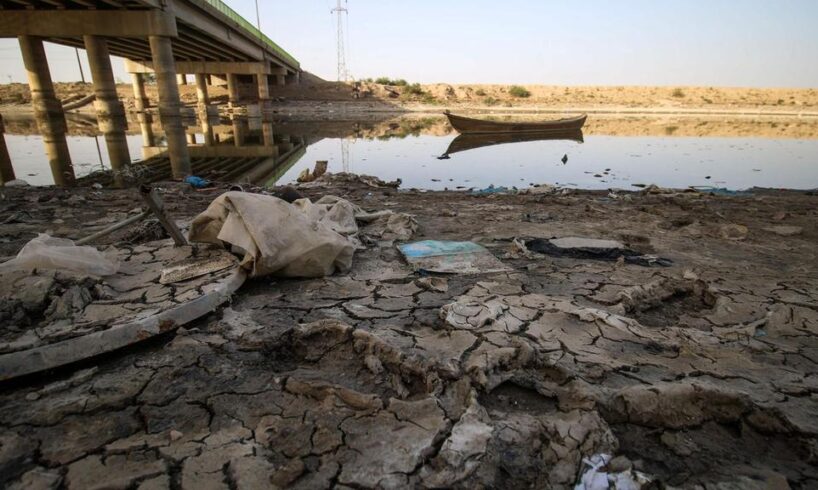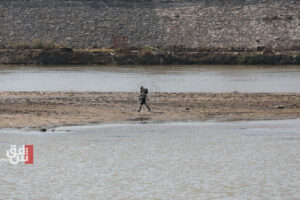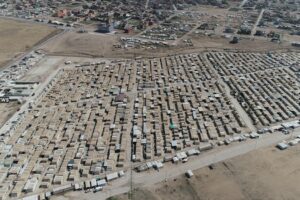
Shafaq News
When Iraqi Prime Minister Mohammed Shia
al-Sudani welcomed Turkish President Recep Tayyip Erdogan to Baghdad in April
2024, the two leaders announced a ten-year water framework agreement hailed as
a turning point in Iraq’s bid for its “fair share” of the Tigris and Euphrates.
Yet it was far from the first such promise.
For nearly a century, Iraq has struck
treaties and memoranda with both Turkiye and Iran — agreements that pledged
cooperation but often failed to deliver.
Shafaq News traces this long history, from
early treaties in the 1930s to today’s frameworks, revealing a cycle of
ambition, crisis, and unfulfilled commitments.
Early Treaties and Border Waters
(1930s–1970s)
The first attempts to regulate Iraq’s shared
rivers came not with Turkiye but with Iran, and not over the Tigris or
Euphrates but over the Shatt al-Arab.
In 1937, under the auspices of the League of
Nations, Baghdad and Tehran signed agreements establishing navigation and
territorial control over the channel, which serves as the confluence of Iraq’s
great rivers before reaching the Gulf.
The accords were framed as border demarcation
treaties, but they held deep water implications. Whoever controlled the Shatt al-Arab
controlled not just shipping but the delicate balance of salinity and
irrigation flows in Basra and the south.
Iraq soon turned its attention northward, and
on March 29, 1946, Iraq and Turkiye concluded the Treaty of Friendship and
Neighbourly Relations. While broad in scope, it included provisions specific to
the Tigris and Euphrates: Ankara committed to consult and notify Baghdad about
any “conservation works” or hydraulic projects that might affect downstream
flows.
For Iraq, this represented an early safeguard
against unilateral action; for Turkiye, it enshrined its position as custodian
of the headwaters. Yet the treaty avoided binding quotas, relying instead on
goodwill and consultation — a principle that would be tested as dam construction
accelerated.
By the mid-1970s, Iraq and Iran returned to
the negotiating table. On March 6, 1975, former President Saddam Hussein and
Iran’s Shah Mohammad Reza Pahlavi, brokered by Algeria’s Houari Boumediene,
signed the Algiers Agreement. Its primary purpose was to settle border clashes
and insurgencies, but water was central.
The main treaty was supplemented by a
Protocol on the Delimitation of the River Frontier (June 13, 1975) and an
Agreement Concerning the Use of Frontier Watercourses (December 1975). These
instruments set rules for “optimal utilization” of rivers straddling the
frontier, procedures to prevent harm, and committees to resolve disputes. While
the Algiers Agreement is remembered mainly for shifting sovereignty of the
Shatt al-Arab, its annexes stand out as some of the most detailed legal texts
on Iraq’s shared rivers.
Yet implementation faltered almost
immediately. The Iranian Revolution of 1979, followed by the Iran–Iraq War of
1980–1988, rendered the water protocols dormant.
But Iraq’s concerns soon shifted northward,
as Turkiye’s control of the Tigris and Euphrates headwaters became impossible
to ignore.
Dams and Power Politics (1970s–2000s)
Even as treaties were signed, physical
infrastructure was reshaping Iraq’s water reality. In 1974, Turkiye completed
the Keban Dam on the Euphrates. This was followed by the Ataturk Dam in 1992,
the centerpiece of Turkiye’s Southeastern Anatolia Project (GAP). With the
capacity to store 48 billion cubic meters, Ataturk granted Ankara unprecedented
control over downstream flows.
In Iran, parallel projects transformed the
hydrology of Iraq’s southern frontier. The Karkheh Dam, inaugurated in 2001,
created a reservoir of nearly six billion cubic meters, reducing flows to
Iraq’s marshes. The series of Karun dams further diminished inflows to the
Shatt al-Arab, intensifying salinity and fueling discontent in Basra.
By the turn of the century, Iraq’s
predicament was clear: treaties spoke of consultation, but dams decided
reality.
Fragile Cooperation (2009–2020)
The late 2000s brought drought across the
region, prompting Iraq, Turkiye, and Syria to seek a cooperative reset. In
September 2009, the three states signed a Memorandum of Understanding on the
Euphrates and Tigris. The MoU called for data sharing, joint measurement
stations, and technical collaboration on drought management. Officials hailed
it as a breakthrough — a shift from political disputes to technical
cooperation.
But the MoU was non-binding. Without defined
quotas or enforcement, it depended on goodwill. As the Syrian conflict
escalated after 2011, the tripartite initiative unraveled, leaving little
institutional legacy.
The vulnerability of Iraq’s position was
exposed a decade later. In 2019, Turkiye began filling the reservoir of the
Ilısu Dam on the Tigris. With a storage capacity of over seven billion cubic
meters, Ilısu dramatically altered downstream flows. By 2020, the dam’s
turbines were operational. For Iraq, the consequences were immediate: reduced
river levels in Mosul, salinity spikes in Basra, and social protests across the
south.
The Ilısu episode highlighted the limits of
earlier frameworks. Consultation clauses and data-sharing promises offered no
real buffer against the unilateral filling of massive reservoirs.
This crisis pushed Baghdad back to the table,
hoping once again that new promises could succeed where old ones had failed.
New Promises and Ongoing Struggles
(2021–present)
Facing acute shortages, Iraq’s Ministry of
Water Resources sought renewed commitments. In March 2021, Turkish officials
pledged to provide Iraq with its “fair share” of the rivers. Ministers in
Ankara and Baghdad portrayed this as a breakthrough. Yet no treaty text was
released, no volumes were specified, and no monitoring mechanisms were
established. The phrase “fair share” became a political slogan, welcomed in
Baghdad but unverifiable in practice.
Three years later, Iraq turned another page.
In April 2024, during Erdogan’s high-profile visit to Baghdad, the two
countries announced a ten-year framework agreement on water. Unlike earlier
deals, it offered a multiyear horizon and a promise of automatic extension
unless either side opted out. Iraqi officials celebrated it as historic,
emphasizing that for the first time, water management was explicitly tied to
broader trade and security partnerships.
Yet skepticism lingers, and the agreement’s
details remain unpublished, with no release schedules or transparent
data-sharing platforms available. The framework risks becoming another promise
on paper, never felt downstream in a long cycle of unmet expectations.
As Iraq confronts a hotter and drier future
due to climate change, history shows that consultation and goodwill alone
cannot secure water downstream. Unless future agreements include binding quotas
and real enforcement, Iraq’s shelves will keep filling with treaties — while
its rivers run dry.
Written and edited by Shafaq News staff.





